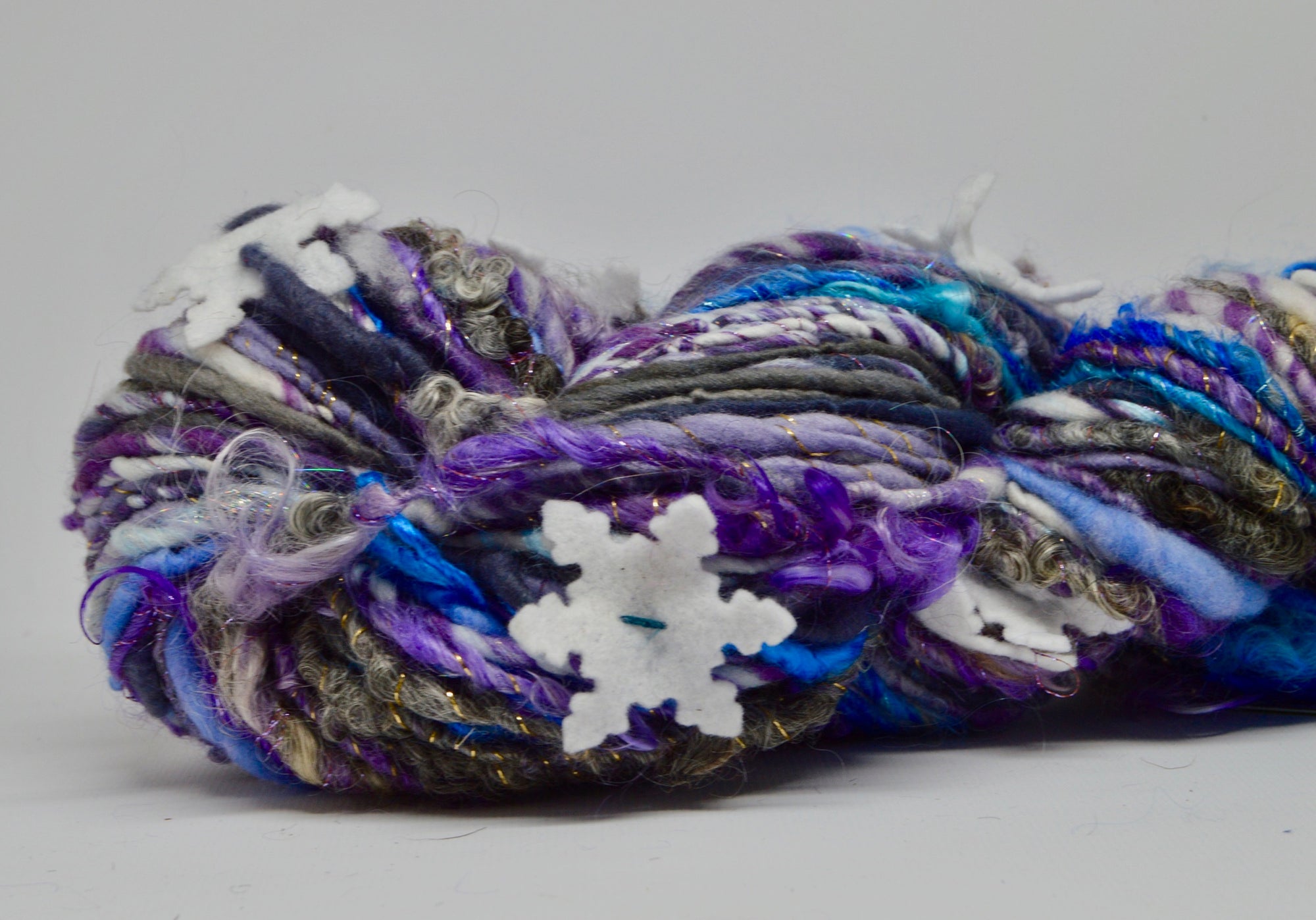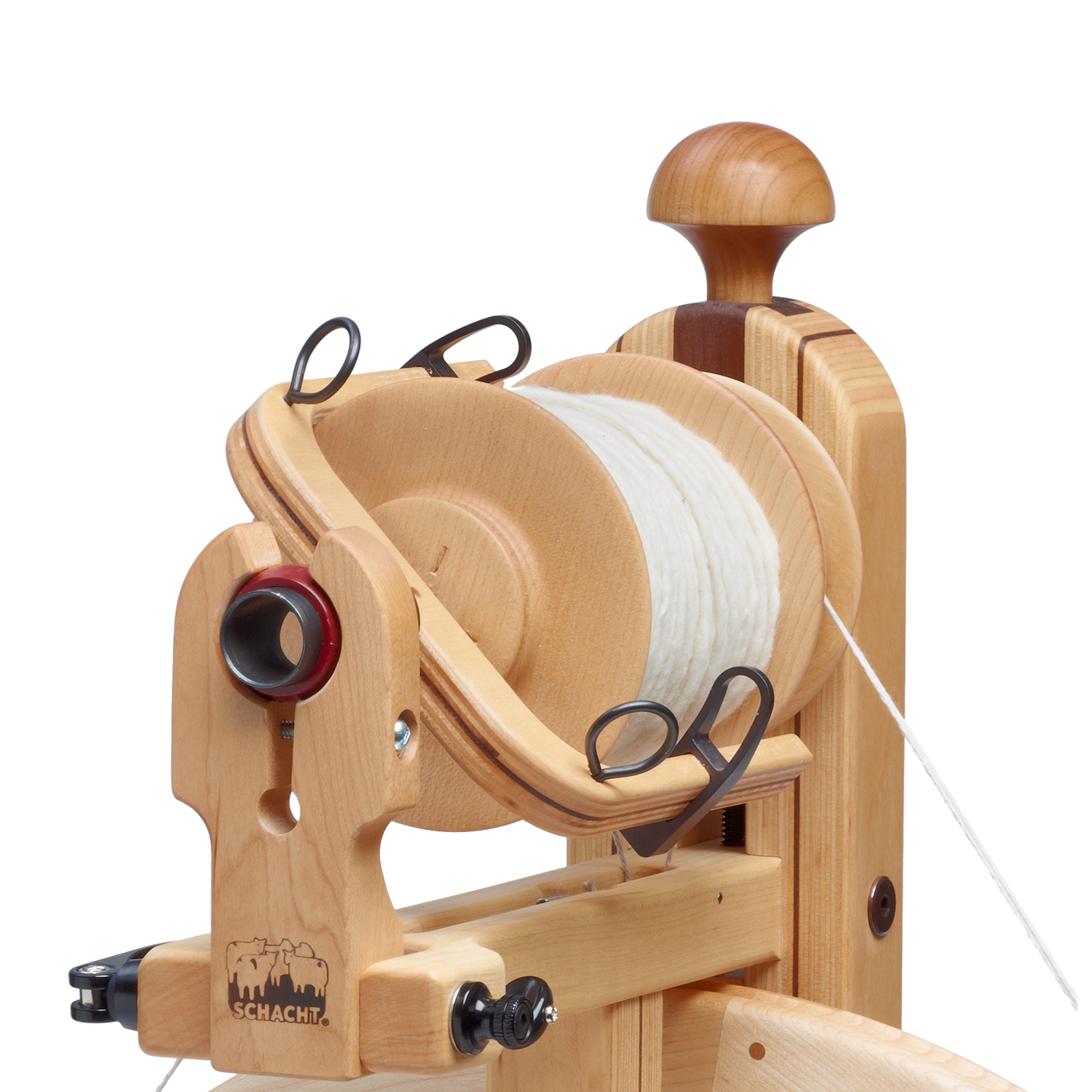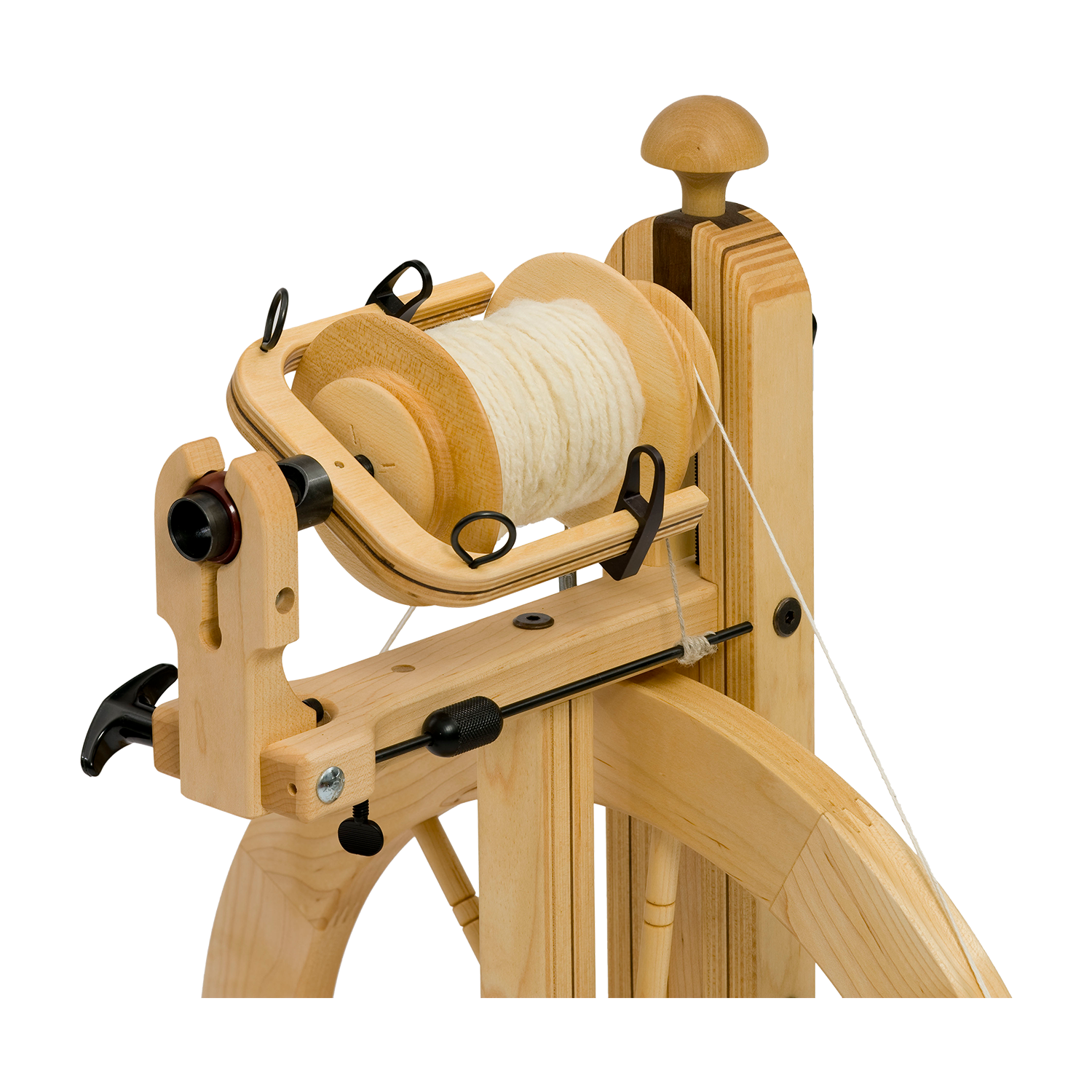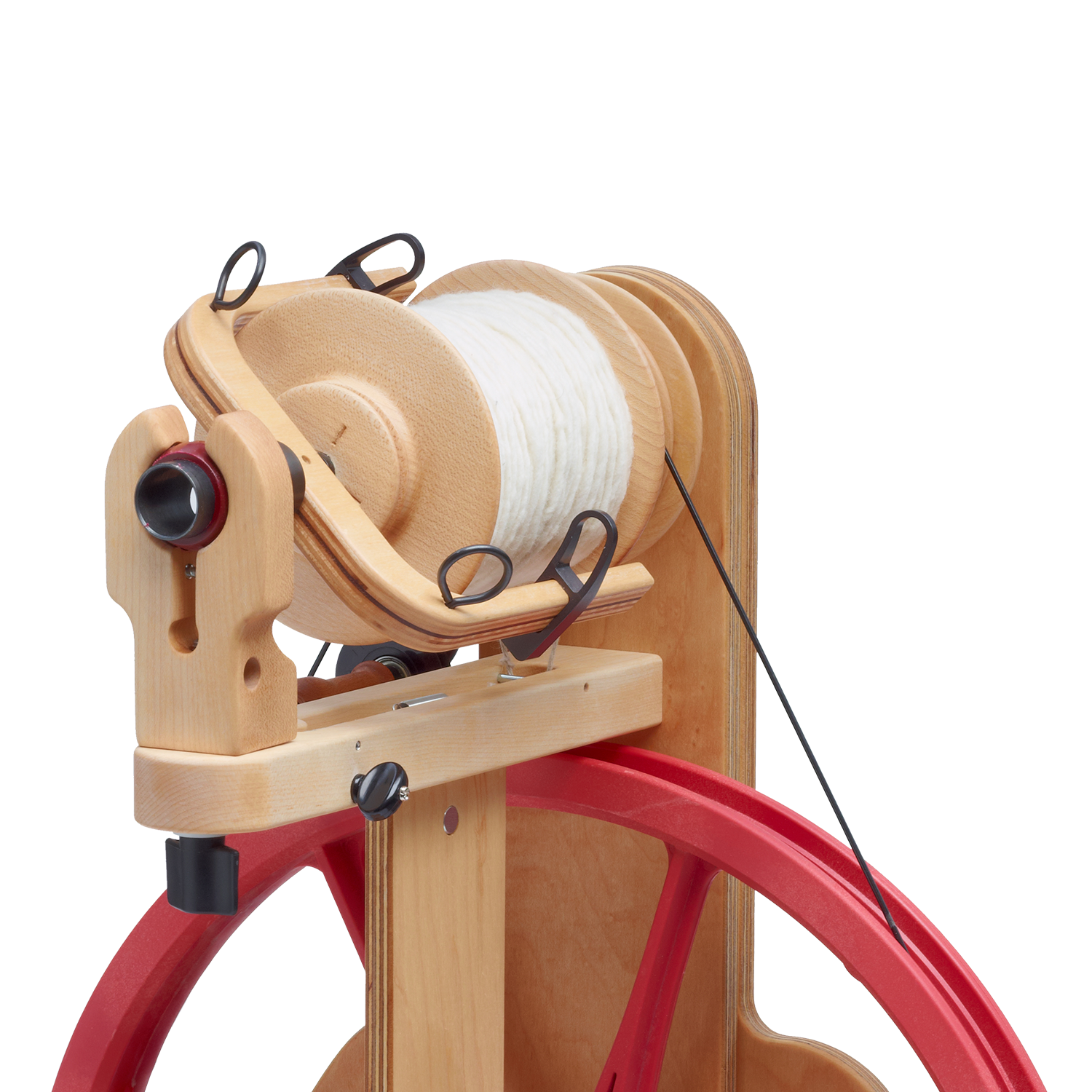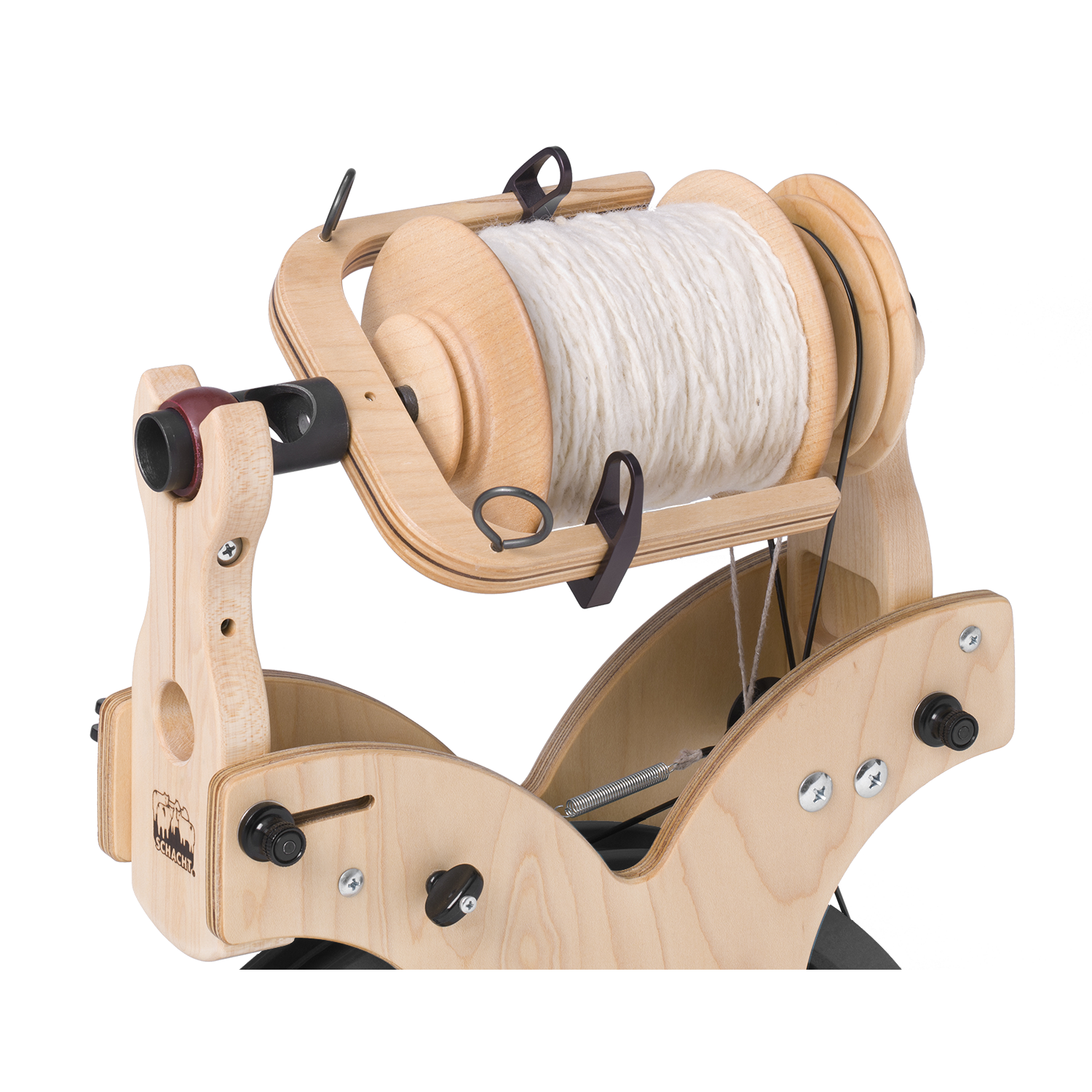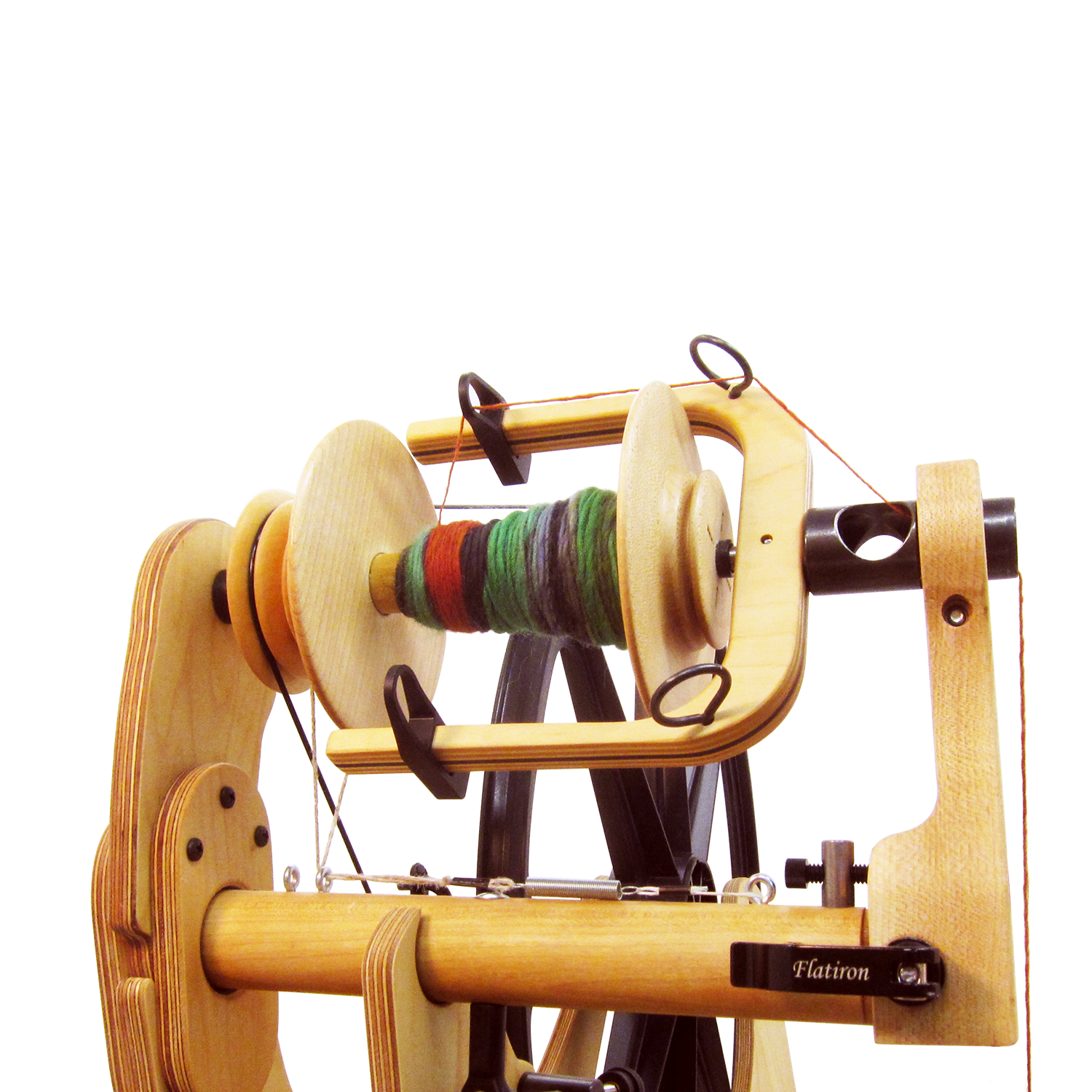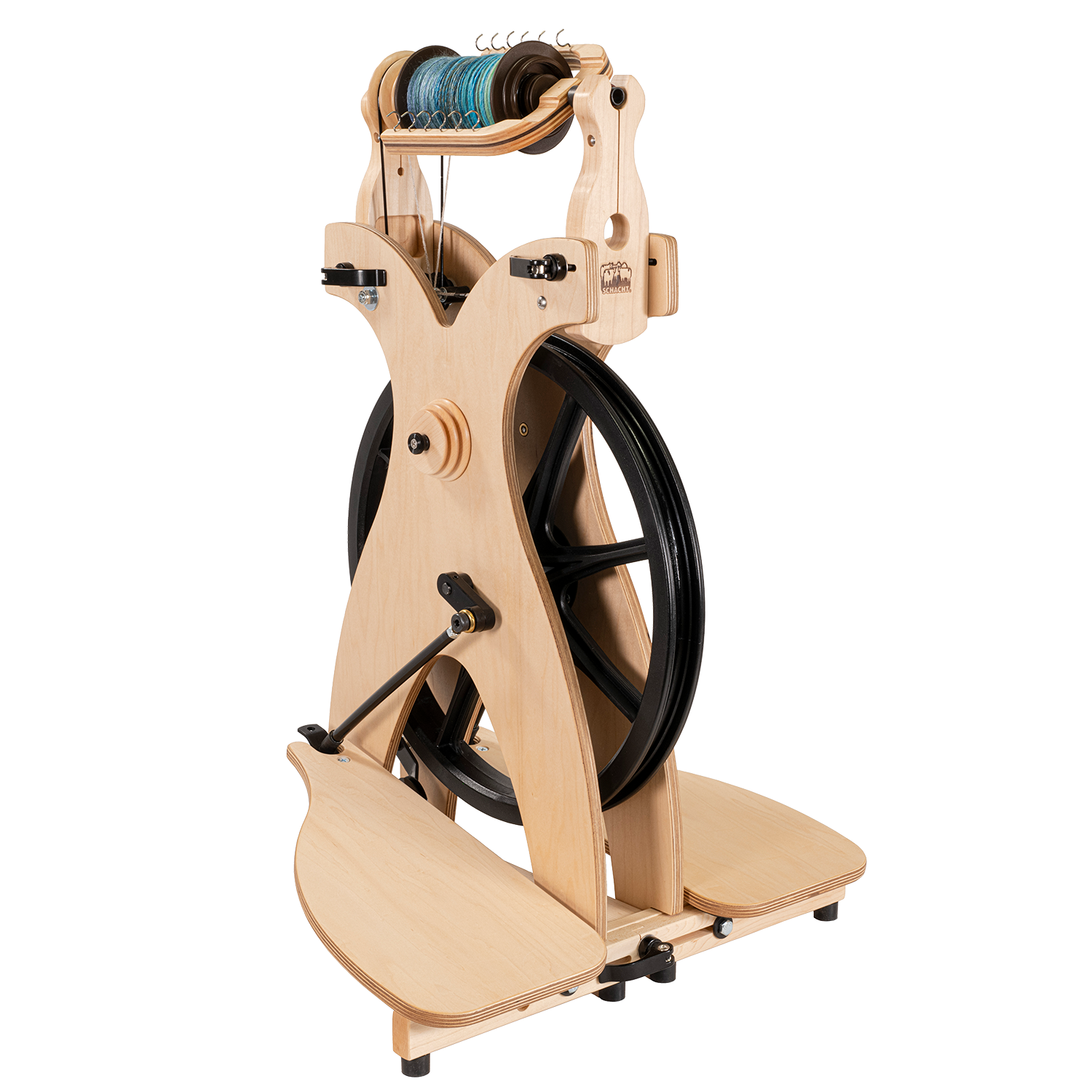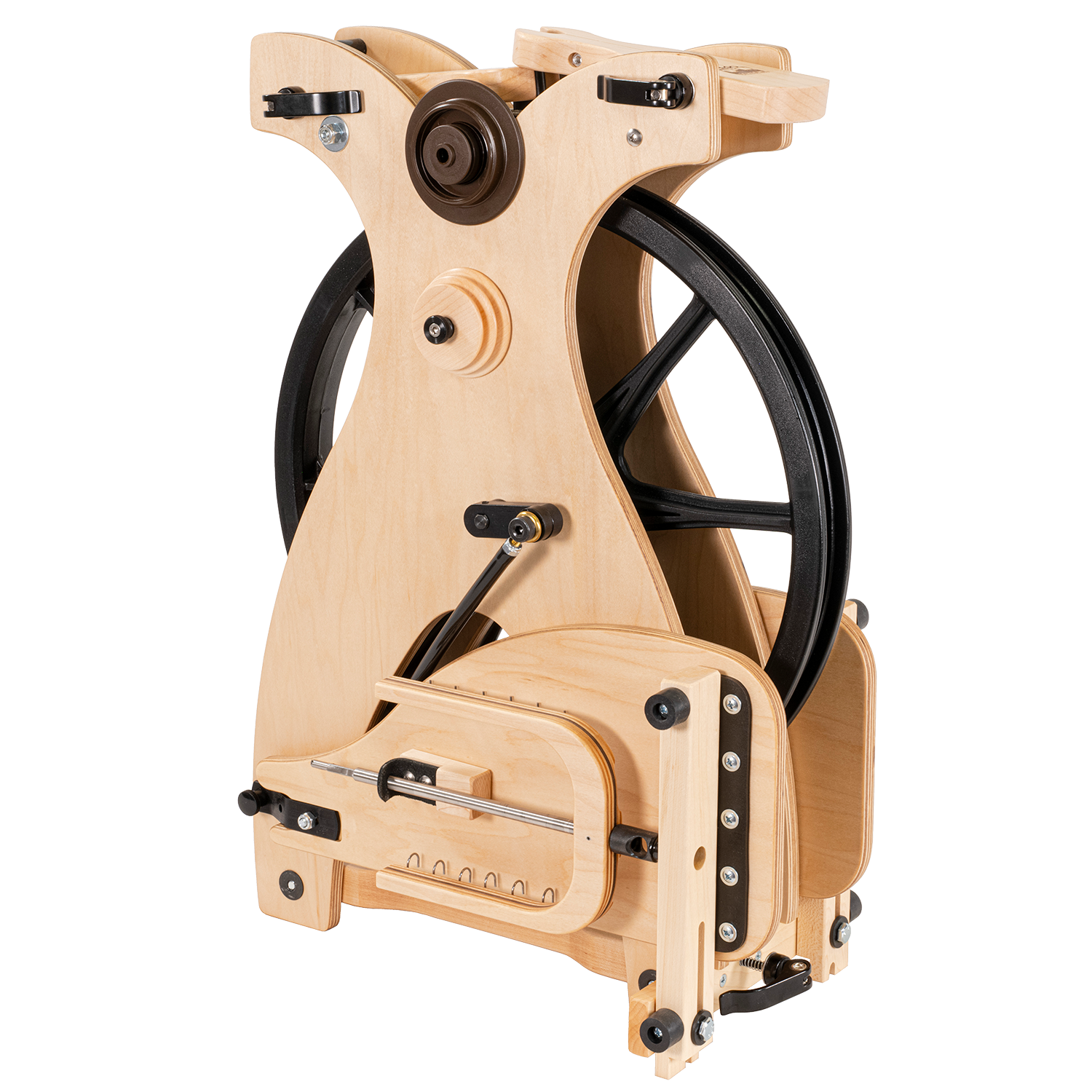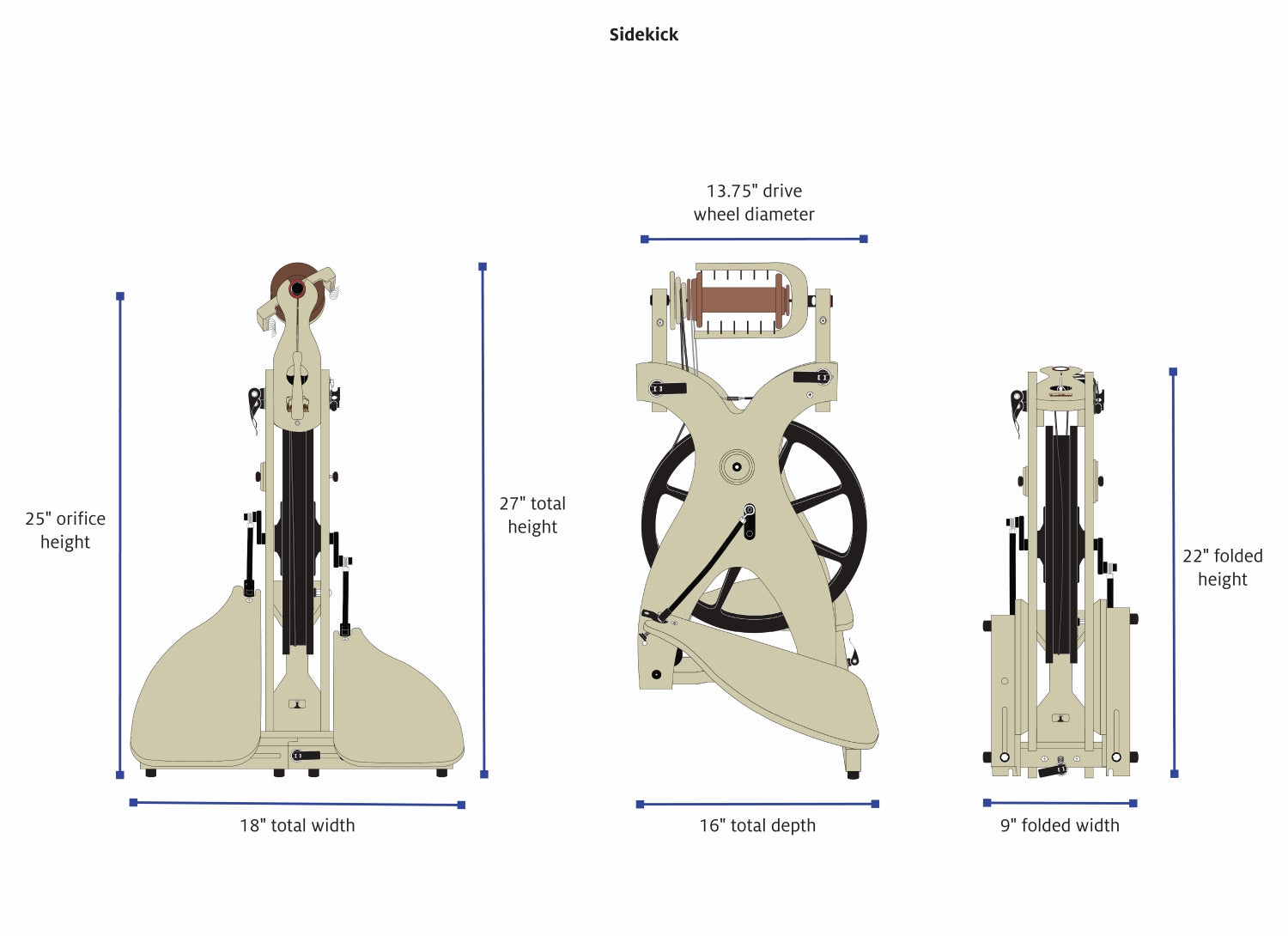Lockspinning on the Sidekick
By Alexander Reynoso
Lockspinning is one of my favorite art yarn techniques. Yarn spun in this way resembles the sheep, goat, or alpaca you're spinning. It can be a great way to add texture and a sheepier feel to your projects.
In lockspinning, you work with minimally processed locks to preserve their original texture. Here I used mohair and Border Leicester locks, but other longwool breeds work too: try Gotland, Cotswold, Teeswater, Wensleydale and even suri alpaca. I highly suggest mixing breeds and colors, dyed and natural, to add more depth into your art yarn.
I also auto wrapped my lockspun yarn. In this technique, you wrap a decorative thread around the single as you spin. It's more decorative than structural—grab a thread that’s sparkly or textured to add more interest to the final yarn.

Set up your wheel with a Bulky Plyer Flyer. The Bulky Plyer Flyer really changes the game: the big orifice and yarn guides allow all these textures to freely wind onto the bobbin. I spin this style of yarn using a high tension and my biggest whorl so I don't add too much twist.
What You'll Need
- scoured locks of mohair, dyed or natural
- scoured locks of Border Leicester, dyed or natural
- Lurex thread, cotton thread, or textured thread for auto wrapping
-
Schacht Sidekick set up with the Bulky Plyer Flyer and Bulky Bobbin
Materials
Equipment
Directions
Use your fingers to lightly pick the wool locks into a fiber cloud. Don’t over-fluff your cloud or you’ll lose lots of the natural texture. Make the fiber airy and more spinnable than untouched locks.
Attach the fiber cloud to the leader: hold the fiber at a 45-degree angle and corespin it around the leader for 6 to 8 inches.
Spin a singles yarn, using a short draft. Leave the lock's curls intact as they come to the orifice. When a big slub occurs, let it happen—this is the magic of lockspun yarns. If you're worried about the slub coming apart, you can let more fiber build up over one end of the lock, or you can felt the skein to keep everything together.
Auto wrap for extra texture. Set the thread cone on the floor (mine is at my left so thread doesn’t grab onto the Sidekick’s drive wheel) and attach the thread by corespinning. For true auto wrapping, don't hold on to this thread or add any tension. As you lockspin from the cloud, the thread will wrap itself around the singles.I also use a semi auto wrap, where I have a little more control and it’s faster: I hold the thread in my forward hand and very lightly tension it with my pinky or index finger.
You can finish lockspun yarn with a regular soak or a felted finish. I just let mine soak in warm water with a wool wash. For a felted finish, shock the yarn by moving it between hot and cold water. If you find that your yarn is very overspun and kinky, whack the damp skein to redistribute twist.
Lockspun yarns can add lots of weft texture, either in pops or large sections, in woven pieces. I like striping them into knitted or crochet projects for a nice contrast.
Notes
See Jillian Moreno's blog for more auto wrap variations.

